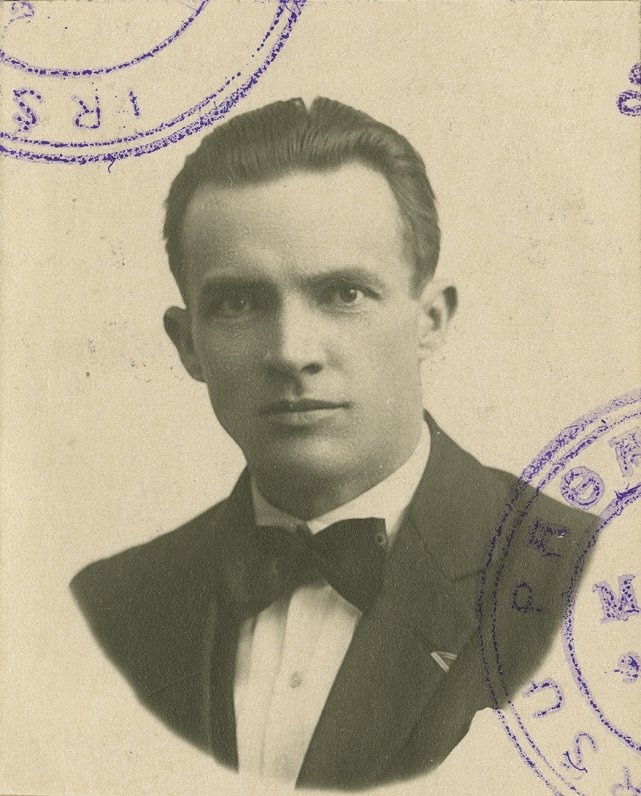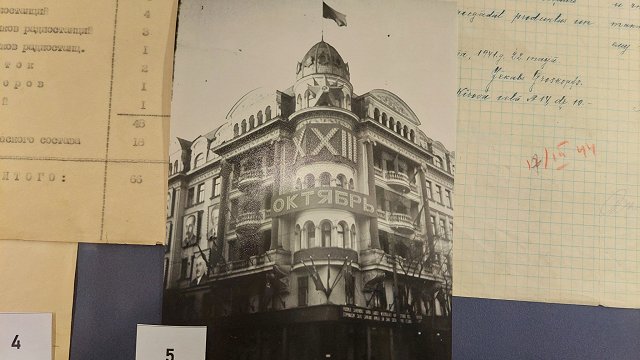The exhibition provides a timely reminder that it was not only ethnic Latvians who risked their lives for an independent and democratic Latvia. Baltic Germans are often depicted as the "bad guys" in simple tellings of the complex history of the period but as the exhibition shows, more than 50 Baltic Germans were awarded Latvia's highest military honor.
Among them is Konrad Deckert (Konrāds Dekerts), whose biography is every bit as extraordinary as befits that turbulent and dramatic period of history. For during the final desperate assault on the Latvian capital by forces under the command of Cossack warlord Pavel Bermondt-Avalov, Deckert acted as a spy in the enemy camp, feeding crucial information to the defenders of Rīga.
"He was clearly a bright and colorful personality, both in his views and in his actions," says Arnis Strazdiņš, a historian and one of the curators of the exhibition.
Born into a family of Baltic German school teacher in Irši parish near Koknese, where there was a German colony founded in 1766, he received an excellent education.
"He joined the Russian Imperial Army during World War I, but his route took him all the way to France. There, he joined the French Foreign Legion and fought on various fronts, including all the way to Africa," the historian reveals.
In 1919 Konrad Deckert returned to the Baltics as a lieutenant with the French military mission - and as a spy for his homeland. He was infiltrated into the ranks of Bermondt-Avalov's army, where, due to his excellent knowledge of several foreign languages, he secretly collected information and passed it on to the allies and to the provisional government of Kārlis Ulmanis.
Later Deckert worked as a sworn attorney, specialized in trade and was a board member of several companies.
The exhibition features a series of photographs depicting Deckert in the 1920s and 1930s - a sophisticated, handsome man. This made him popular with the ladies, though this was not without its complications, as Arnis Strazdiņš recounts: "A family story is told that Konrad and his wife Olga, a Russian woman with a rather nasty temper, once went to a ball. Konrad flirted with another woman and so Olga threw a fish at him."
After the war, Deckert returned to his native Irši parish, built a house and planned to construct a dairy to make cheese.
Whether the former spy succeeded in his cheese plan is not known, but after the Soviet occupation, Deckert's fate was dire. He had great respect for Russian culture and was unpleasantly surprised by the brutality of the occupation. Yet he and his family insisted on staying in Latvia.
"Deckert hoped his knowledge and skills would be useful to the new power, but unfortunately he was bitterly mistaken. In 1941, he and his daughter, Tatyana, were arrested and in 1942 Konrad died during deportation," says Vāveris.
Deckert serves as a timely reminder that dozens of non-Latvians were awarded the Order of Lāčplēsis, including 56 Baltic Germans, 30 Russians, 15 Poles, eight Lithuanians, nine Estonians, and one Swede.
As previously reported by LSM, the symbolic founding date of the order is considered to be November 11, 1919, which is why the National History Museum has opened this exhibit dedicated to the 100 year anniversary. It centers around the stories of 11 knights of the order.




























